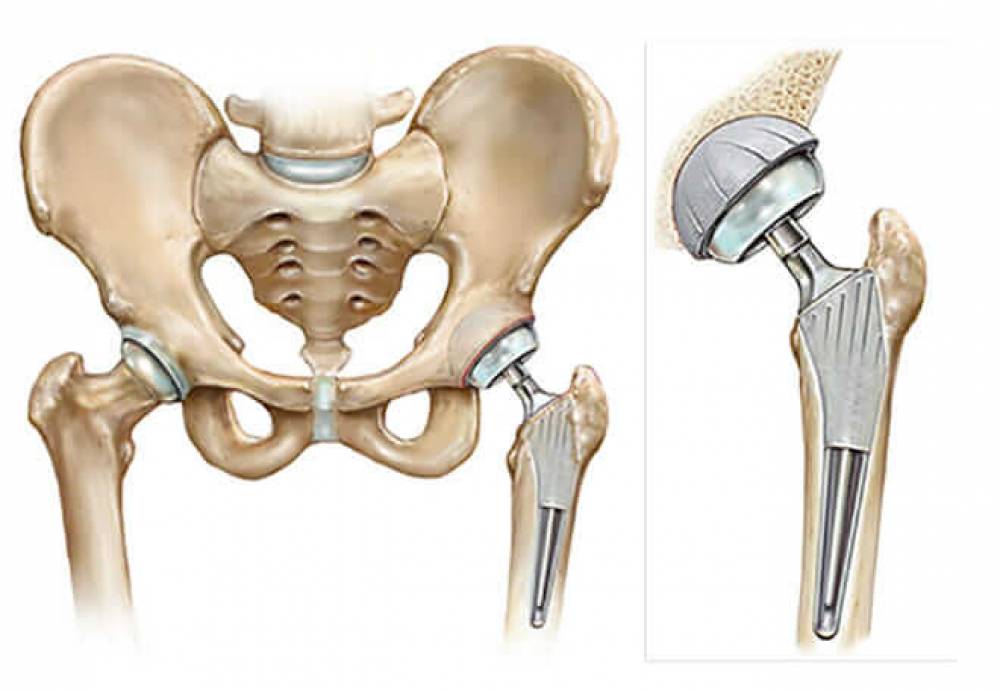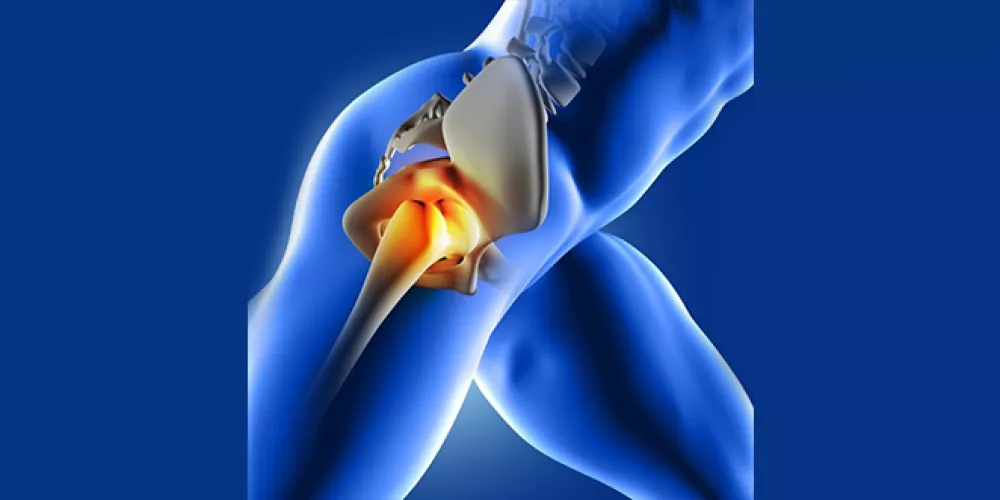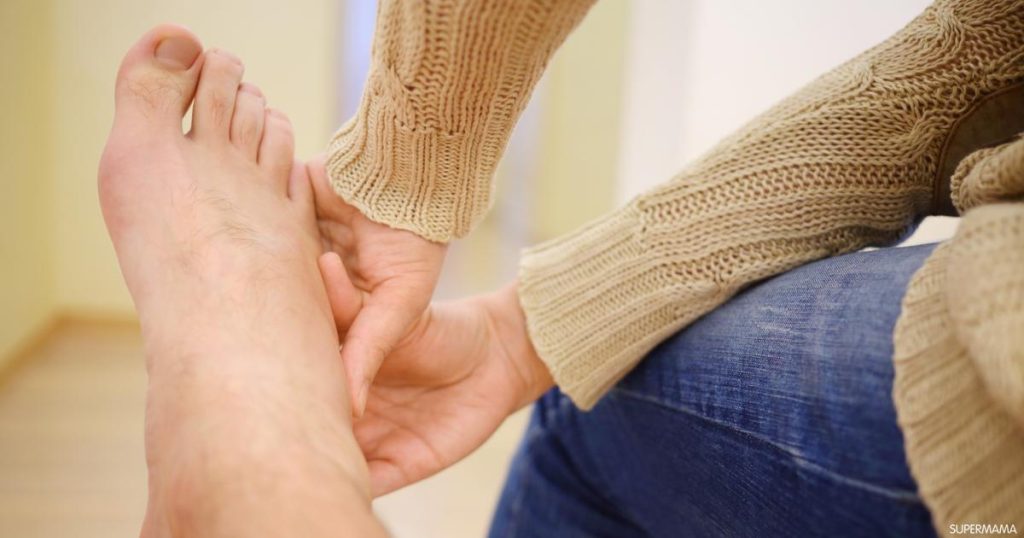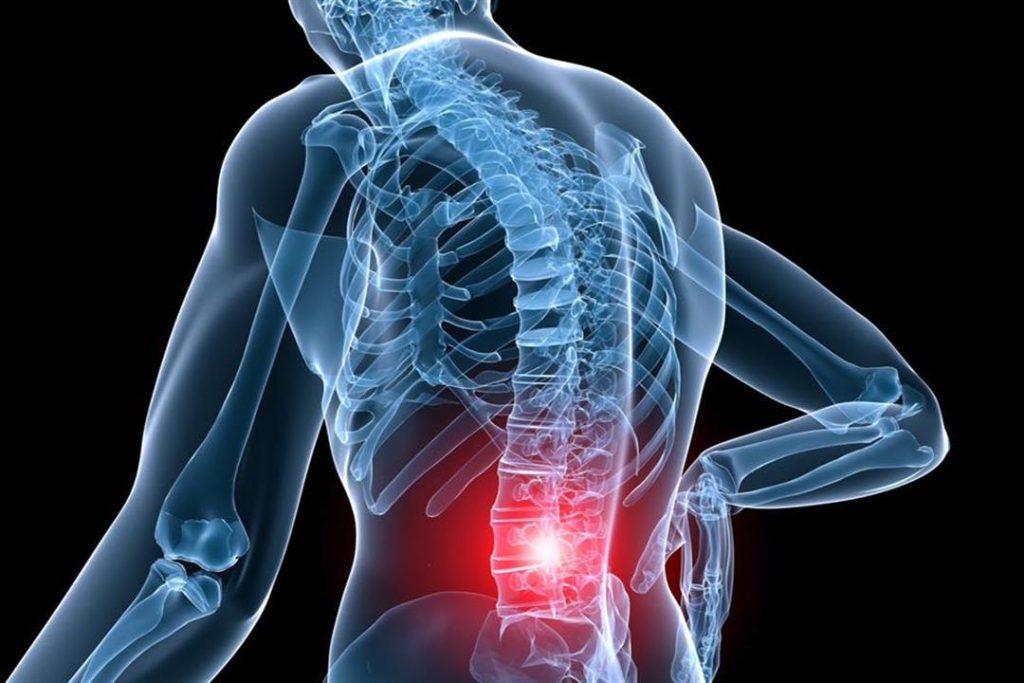What are the symptoms of sciatica? And does it heal on its own?
أخر تحديث :
What are the symptoms of sciatica?
Sciatica symptoms are among the common pains that many people suffer from. Sciatica is described as a neuropathic pain that results from injury or irritation to the sciatic nerve.
Sciatica is characterized by occurring when something compresses or irritates the sciatic nerve, and the potential causes include several factors such as:
- Herniated disc: This is the most common cause of sciatica. The discs between the vertebrae of the spine act as cushions, and with age, these discs become weaker and more prone to injury. Sometimes, the gel-like center of the disc can squeeze onto the roots of the sciatic nerve, leading to long-lasting sciatica pain that can persist for more than 6 weeks.
- Spinal stenosis: Narrowing of the spinal canal in the spine can lead to compression on the sciatic nerve and cause sciatica pain.
- Muscle strain injuries: Excessive tension in the muscles or muscle strain injuries at the level of the sciatic nerve can cause sciatica pain.
Sciatica pain in women: Although sciatica is felt in both men and women, men are three times more likely to be affected by it than women. Common symptoms of sciatica in women include:
- Lower back pain: The pain appears in the back in the form of an electric shock, burning, or stabbing.
- Leg pain: The pain worsens when the person sits for a long period.
- Buttock pain: The person feels a constant pain on one side of the buttocks.
- Weakness, numbness, and difficulty moving the leg or foot.
- Difficulty standing up easily.
People suffering from sciatica symptoms should record the symptoms and the time when they start to appear, and gather key medical information, including other diseases they may be suffering from and the names of medications they are taking. This information will help doctors diagnose the condition and establish an appropriate treatment plan.
Sciatica is often treated in many cases with simple self-care, taking some pain relief medications, and exercising. In some rare cases, surgical intervention may be necessary.
Anyone experiencing symptoms of sciatica should consult a specialist doctor to get an appropriate evaluation and treatment.
How can I completely get rid of sciatica?
Practicing yoga and stretching exercises:
- Body stretching exercises and yoga practice can help alleviate sciatica pain.
- Stretching techniques can be used to improve muscle flexibility and reduce spasms, thereby relieving pain and improving movement. Using ice and hot packs:
- Ice packs can be used to reduce inflammation and alleviate pain caused by sciatica.
- Hot packs can also be used to relieve tension and improve blood circulation in the affected area. Physical therapy:
- Physical therapy is one of the most effective ways to treat sciatica.
- Physical therapy includes techniques such as massage, acupuncture, and spinal adjustment to relieve pain and improve the overall condition of the body. Using pain relief medications:
- A doctor may prescribe pain relief medications to alleviate sciatica pain.
- It is preferable to consult a doctor before using any medication to determine the appropriate dosage and the suitable duration of use. Physical exercises:
- Sciatica can also be treated using appropriate physical exercises.
- For instance, nerve gliding exercises and stretching exercises for the back and hip muscles can be practiced to relieve pain and improve flexibility.
Rest and relaxation:
- Patients should take adequate rest and avoid activities that exacerbate pain.
- Relaxation techniques such as meditation and deep breathing can be applied to reduce psychological stress and calm the body.
People with sciatic pain should consult a doctor before applying any of the above methods. Some individuals may require medical intervention or other treatments to achieve comprehensive relief from sciatic pain.
Does sciatica heal on its own?
Today, we will learn important aspects about sciatica and its ability to heal on its own. Do you have back and leg pain caused by sciatica? Are you wondering about the duration of this pain and the possibility of its treatment? Let’s discover the answers in this list.
Duration of acute and chronic sciatica: Sciatica can occur acutely or chronically. In the case of acute sciatica, an episode can last from a week to two weeks, and usually, the pain heals on its own within a few weeks. The patient may experience some numbness after the pain decreases, and these episodes can recur several times a year. Acute sciatica may eventually turn into chronic sciatica, where the pain is present regularly.
Methods to relieve pain: If acute sciatica does not heal automatically, people can try several methods to alleviate the severity of the pain. Resting for a few days after the onset of an episode, in addition to avoiding a long period of inactivity before resuming regular activity, may help. Stretching muscles and light exercise may also alleviate pain. In the case of severe or unresponsive pain to self-treatment, the person may need to consult a doctor and possibly surgery.
Similar symptoms: There may be other conditions that mimic the symptoms of sciatica. Some of these conditions are regular back pains, where the pain is concentrated only in the lower back. This pain may be due to muscle tears or spasms. There are also other conditions such as herniated discs, kidney stones, or nerve compression in other parts of the body. Therefore, if you suffer from back and leg pain, it is important to consult a doctor for an accurate diagnosis and appropriate treatment.
How to treat chronic sciatica: In some cases, the pain may persist in the long term and sciatica becomes chronic. The doctor can prescribe appropriate treatments to alleviate the severity of the pain and improve the quality of life. Pain-relieving medications such as non-steroidal anti-inflammatory drugs may be used, or there may be a need for physical therapy such as heat therapy or massage. In rare cases, surgery may be suggested to relieve nerve pressure and improve symptoms.
The importance of medical consultation: Before deciding on any type of treatment, it is important to consult a specialist doctor. The doctor can provide an accurate diagnosis and determine the most appropriate treatment to alleviate the pain and treat sciatica. Do not hesitate to book a medical consultation appointment if you feel any pain that may be related to sciatica.
A piece of advice for the conclusion: Sciatica can be painful and exhausting, but in most cases, it can heal by itself within a few weeks. However, if the pain persists or worsens, it is best to consult a doctor for an accurate diagnosis and effective treatment.
Where does sciatica come from?
Sciatica is a condition that causes pain in the lower back and spreads along the sciatic nerve. The cause of sciatica can vary according to each case, but there are some common causes that can lead to this type of pain. In this article, we will take a look at some of the common causes of sciatica.
- Herniated disc: The herniated disc is one of the common causes of sciatica. This occurs when the intervertebral disc separates improperly between the vertebrae and presses on the sciatic nerve. This pressure can cause sharp pain in the back and leg area.
- Sciatic nerve compression: Sciatica can result from the compression of the sciatic nerve itself. This pressure can be due to a narrowing of the nerve canal in the vertebrae near the spinal cord. The narrowing may be due to inflammation, herniated disc, or bone overgrowth.
- Sciatic nerve lesions: Infection of the sciatic nerve or its exposure to injury can also lead to the appearance of sciatica. Injuries from accidents or previous surgeries can cause nerve damage and lead to pain.
- Spinal stenosis: There may be a narrowing of the bone canal surrounding the spinal cord, leading to pressure on the sciatic nerve and the appearance of sciatica. This narrowing can result from factors such as excess bone formation or arthritis.
- Pregnancy: Pregnant women may temporarily suffer from sciatica. The weight load increases during pregnancy, which puts pressure on the nerves and causes pain. This pain can disappear after childbirth.
It is important to remember that in the event of any symptoms of sciatica, a doctor should be consulted to diagnose the condition correctly and determine the possible cause. A physical examination and medical history may help in confirming the diagnosis of sciatica and choosing the appropriate treatment.
Sciatica is a common and treatable condition, and in most cases, it can improve on its own without the need for special treatment. However, some patients may need bed rest for a short period after the initial symptoms appear to speed up the recovery process.
Do not hesitate to consult a doctor for an accurate diagnosis and an appropriate treatment plan based on your individual condition.
Does sciatica pain worsen at night?
Do you suffer from severe sciatic nerve pain that bothers you during the night? You may have a condition known as sciatica, which is a common issue many people face. Many wonder whether sciatica pain worsens at night. In this article, we’ll look at this topic and provide some tips for improving sleep at night during this difficult period.
The effect of sciatica pain on sleep: Sciatica can cause sharp and constant pain in the sciatic nerve, one of the largest nerves in the body. As a result, it can be difficult to get good sleep at night. Lying down in certain positions can increase the pressure on the irritated nerve and the severity of the pain.
Comfortable sleeping positions: There may be some comfortable sleeping positions that can help alleviate the severity of sciatica pain and facilitate sleep. Sleeping on the side may be beneficial in reducing the pressure on the irritated nerve, and if you have spinal stenosis, sleeping on your back may be best for you. Additionally, placing a pillow between your knees can be helpful in improving the position of the spine and pelvis.
Appropriate pillows: Using suitable pillows may also be helpful in alleviating sciatica pain at night. A small pillow placed between the waist and the mattress can reduce lateral bending and pressure on the affected nerve. There are also special pillows designed to support the spine and achieve a correct sleeping posture.
Other treatments: In addition to proper positions and using suitable pillows, you can follow some other treatments to relieve sciatica pain and improve sleep. This can include doing some exercises targeting the strengthening of muscles around the sciatic nerve and relieving pressure on it. You may also benefit from physical therapy sessions to improve mobility and relieve pain.
In conclusion, if you are suffering from sciatica pain and find it difficult to sleep, it is important to cooperate with your doctor to diagnose the cause of the pain and receive appropriate treatment. There may also be other options such as taking pain relief medications based on your doctor’s guidance.
Finally, remember that the pain resulting from sciatica can vary from person to person, and therefore, you may need to try different positions and pillows until you find the ones that work best for you.
Does sciatica show up on imaging?
X-rays and magnetic resonance imaging (MRI) are powerful diagnostic tools that can be used to detect sciatica. Sciatica appears when a herniated disc, bone spurs, or spinal stenosis presses on part of the nerve, and X-rays and MRI can reveal these issues that lead to sciatica.
Here is some important information about using imaging to diagnose and detect sciatica:
X-rays: X-ray imaging can reveal an overgrowth of bone that can press on a nerve, leading to sciatica symptoms. The spine is imaged using X-rays to determine the presence of any conditions associated with sciatica. MRI: The advanced technique of MRI is a modern diagnostic tool that can provide more details about spinal issues, including herniated discs, bone spurs, and stenosis. MRI is used to get detailed images of the internal tissue and the spine to determine the impact of a herniated disc on the nerve and to diagnose sciatica.
It is worth noting that if there is no severe and persistent pain, there might be no need for radiographic imaging to diagnose sciatica. Most cases are successfully diagnosed using physical examinations, medical history, and evaluation of the symptoms commonly associated with sciatica.
X-rays and MRI are powerful tools for detecting sciatica and verifying the presence of spine issues that lead to the condition. It is important to consult a specialist to determine if these tests are necessary and suitable for your health condition.
Can sciatica occur in both legs?
Sciatica is a medical condition that affects the nerves and causes pain and numbness in the leg. One common question about sciatica is whether it can occur in both legs at the same time. We will clarify this as follows:
Finally, remember that the pain resulting from sciatica can vary from person to person, and therefore, you may need to try different positions and pillows until you find the ones that work best for you.
Does sciatica show up on imaging?
X-rays and magnetic resonance imaging (MRI) are powerful diagnostic tools that can be used to detect sciatica. Sciatica appears when a herniated disc, bone spurs, or spinal stenosis presses on part of the nerve, and X-rays and MRI can reveal these issues that lead to sciatica.
Here is some important information about using imaging to diagnose and detect sciatica:
X-rays: X-ray imaging can reveal an overgrowth of bone that can press on a nerve, leading to sciatica symptoms. The spine is imaged using X-rays to determine the presence of any conditions associated with sciatica. MRI: The advanced technique of MRI is a modern diagnostic tool that can provide more details about spinal issues, including herniated discs, bone spurs, and stenosis. MRI is used to get detailed images of the internal tissue and the spine to determine the impact of a herniated disc on the nerve and to diagnose sciatica.
It is worth noting that if there is no severe and persistent pain, there might be no need for radiographic imaging to diagnose sciatica. Most cases are successfully diagnosed using physical examinations, medical history, and evaluation of the symptoms commonly associated with sciatica.
X-rays and MRI are powerful tools for detecting sciatica and verifying the presence of spine issues that lead to the condition. It is important to consult a specialist to determine if these tests are necessary and suitable for your health condition.
Can sciatica occur in both legs?
Sciatica is a medical condition that affects the nerves and causes pain and numbness in the leg. One common question about sciatica is whether it can occur in both legs at the same time. We will clarify this as follows:
- The Impact of Sciatica on Both Legs
Sciatica usually affects one side of the body, meaning it may be present in one leg. However, the occurrence of sciatica in both legs together can be relatively rare. This may happen in exceptional cases according to medical case reports.
- Possible Causes of Sciatica in Both Legs Together
Sciatica may occur in both legs together due to specific reasons. These can include hereditary neurological diseases such as Charcot-Marie-Tooth syndrome. Also, rare cases of spinal cord tumors or other neurogenic tumors can also lead to sciatica in both legs simultaneously.
- Treatment for Sciatica Cases in Both Legs Together
When it comes to sciatica in both legs, treatment may require an accurate diagnosis of the potential cause of the condition. Treatment may include taking pain relief medications and addressing the accompanying symptoms of the condition. Surgery may be necessary in some cases to alleviate symptoms and protect the affected nerves.
- Preventative Measures and Self-Care
Although there is no certain prevention for the occurrence of sciatica in both legs together, taking some preventative measures may help in avoiding and reducing symptoms. Measures one can take include avoiding sitting for long periods and maintaining an active lifestyle. Rest and reducing pressure on the legs should also be of significant importance in the case of sciatica symptoms presenting.
Although the presence of sciatica in both legs together is rare, diagnosing and treating the condition requires attention and medical care. Patients should consult a specialist to assess their condition and guide them on the next steps for treatment and symptom management.
How Should Someone with Sciatica Sit?
If you suffer from back problems due to sciatica, sitting correctly can be one of the important things to consider. Proper sitting can help alleviate pain and prevent other problems. In this list, we will provide you with some tips on how to sit correctly if you suffer from sciatica.
Choose the Right Seat:
- Avoid sitting on hard and uncomfortable chairs. Look for a seat that provides the necessary support for the lower back and buttocks.
- Preferably, the seat should be cushioned at both the seat and back to provide more comfort and support. Place a Lumbar Cushion:
- Use a comfortable lumbar cushion to alleviate pressure on the area and provide the needed support.
- The cushion should be appropriately sized and positioned to ensure a correct back posture while sitting. Elevate the Seat:
- Raise the seat to the highest possible level while keeping your feet flat on the ground.
- This position helps to level the natural curves of the spine and relieve pressure on the buttocks and thighs. Consider Thigh Position:
- The thighs should be positioned evenly with the knees.
- Use additional cushions under the thighs if necessary to achieve a correct posture and greater comfort. Avoid Sitting for Long Periods:
- It’s important to take regular breaks and avoid sitting for extended consecutive periods.
- Stand up and walk a little or do some simple stretching exercises to move your muscles and prevent pressure buildup on the nerves caused by continuous sitting. Practice Appropriate Exercises:
- Engage in exercises that target strengthening the muscles around the back and buttocks.
- Strengthening exercises can help improve balance and posture and reduce the pain associated with sciatica.
Important: Remember that these tips are not a substitute for specialized medical care. You should consult your doctor before adopting any lifestyle changes to treat sciatica.
It is important to find the right sitting posture that helps relieve sciatica pain and improve your comfort. Trying different options and consulting with experts can help you find the best for your health.
What is the Natural Treatment for Sciatica?
Sciatica is a condition in which the sciatic nerve is subjected to severe pressure, resulting in sharp pain and numbness in the buttocks, thighs, and legs. Many people suffer from this condition and may seek natural ways to treat it. In this article, we will explore some helpful natural methods for treating sciatica.
- Herbal Remedies: Natural herbs have been used for a long time to treat various health conditions, including sciatica. Some herbs may help alleviate pain and improve body movement, such as:
- Chamomile: It contains anti-inflammatory properties and is considered effective in reducing sciatic nerve pain.
- Ginger and Garlic: Some research suggests that using ginger and garlic may help relieve pain associated with sciatica. However, it’s essential to consult a doctor before using them.
- Massage: Massage can be an effective way to alleviate sciatica pain. Using arnica oil during massage in the sciatic nerve area can effectively contribute to pain relief. However, excessive pressure during massage should be avoided to prevent worsening the pain.
- Rest: Taking ample rest in the initial days of experiencing sciatica can be an effective way to alleviate pain. Intensive physical activity should be avoided during this time to prevent exacerbating the pain and reducing mobility.
- Cold and Hot Packs: Cold packs may help reduce sciatic nerve inflammation in the first few days of the injury. They should be applied to the affected area for 15 to 20 minutes. Warm packs, on the other hand, can be used after the first week of the injury to improve oxygen-rich blood flow to the affected area and relieve muscle tension.
The herbs and natural methods mentioned above are just some of the available options for treating sciatica naturally. The effectiveness may vary from person to person, so it is advisable to consult a doctor before using any natural treatment method. A doctor can provide guidance and recommendations to help improve the condition and alleviate pain for better results.
Is Sciatica on the Right or Left Side?
When it comes to sciatica in a man, it can be helpful to know whether the symptoms appear on the right or left side. Although the symptoms may closely resemble each other, there are some differences that can help identify the affected side. In this article, we will outline some symptoms that can aid in distinguishing between sciatica on the right and left sides.
The Onset of Pain: In the case of sciatica on the right side, the pain may start from the lower back and extend through the buttocks to the right leg and its posterior part. In the case of sciatica on the left side, the pain may start from the lower back and extend through the buttocks to the left leg and its posterior part.
Accompanying Symptoms: Sciatica on either the right or left side may be accompanied by numbness, a tingling sensation, or muscle weakness in the affected leg or foot. Some individuals may feel pain in one part of the leg and experience numbness in another part.
Pain Severity: The severity of pain in sciatica on the right or left side can vary from person to person. Some people may describe the pain as a sharp electrical shock, while others may experience it as a stabbing or burning sensation.
Despite some differences between sciatica on the right and left sides, the required treatment and care remain similar. It is advisable to seek medical consultation and evaluation to determine the appropriate treatment, whether through physical therapy, pain-relieving medications, or, in some cases, surgery.
Differentiating between sciatica on the right and left sides can contribute to a proper diagnosis and necessary treatment steps. However, it is of utmost importance to collaborate with the specialized medical team to receive the required care and guidance.
How to Differentiate Between True and False Sciatica?
Sciatica is a neurological musculoskeletal disorder that can lead to pain and numbness in the lower back, hips, and the back of the legs. It’s essential to distinguish between two types of sciatica: true and false. In this article, we will discuss how to differentiate between them.
- Nature of Pain: In the case of false sciatica, the pain is localized to one side of the body and does not extend below the knee. In true sciatica, the pain extends from the lower back, through the hips and buttocks, down each leg.
- Intensity and Spread: False sciatica pain is generally milder and more widespread compared to true sciatica. True sciatica pain tends to be more severe and less widespread.
- Causes: True sciatica results from specific damage or injury to the lower lumbar spine that compresses the sciatic nerve. False sciatica occurs due to a compressive disc or spinal stenosis that presses on a portion of the nerve.
- Treatment: Treatment varies depending on the underlying causes of true and false sciatica. For false sciatica, recommendations often include mild exercises and physical therapy to alleviate pain and improve the condition. In the case of true sciatica, more intensive treatments like medication and surgery may be necessary in severe cases.
- Consulting a Doctor: To ensure an accurate diagnosis and determine the appropriate treatment, it is always advisable to consult a specialist. A doctor may conduct tests and examinations to identify the type of sciatica and assess overall health.
People experiencing back and leg pain in the lower back, hips, and legs should identify the nature of their pain and accompanying symptoms and consult a doctor to receive the correct diagnosis and suitable treatment for their condition.
What Are the Causes of Sciatic Nerve Inflammation?
Sciatic nerve inflammation is a common condition that affects many people, causing sharp pain and discomfort. This inflammation occurs due to compression, inflammation, or damage to the sciatic nerve or the spinal nerve roots that make up the sciatic nerve. This compression can result from several causes. In this article, we will highlight the main causes of sciatic nerve inflammation.
- Herniated Disc: A herniated disc is a common cause of sciatic nerve inflammation. When the disc between the vertebrae tears or bulges, it can compress the sciatic nerve, leading to inflammation and pain.
- Spinal Stenosis: Spinal stenosis is another potential cause of sciatic nerve inflammation. It occurs when bone or connective tissues accumulate in the nerve canal, putting pressure on the nerve and causing inflammation.
- Spondylolisthesis: Spondylolisthesis often happens in the lower back area and can lead to pressure on the sciatic nerve, irritating it and causing inflammation.
- Muscle Tear or Spasm: Muscle tears or spasms in the hip area can result in pressure on the sciatic nerve and its inflammation.
- Sports Injuries or Accidents: Sciatic nerve inflammation can result from sports injuries or accidents that impact the back or pelvis. These injuries can compress and irritate the sciatic nerve.
- Tumors or Abnormal Growth: The presence of tumors or abnormal growths in the sciatic nerve area can lead to nerve compression and inflammation.
- Infections: Infections or inflammations in the nearby area of the sciatic nerve can also cause its inflammation and compression.
- Other Factors: There are other factors that may contribute to sciatic nerve inflammation, such as increased pressure on the nerve due to weight gain or ligament twisting.
Sciatic nerve inflammation can result from various causes, ranging from disc herniation to spinal injuries and muscle tears. If you experience symptoms suggestive of sciatic nerve inflammation, it is essential to consult a doctor for an accurate diagnosis and the appropriate treatment for your condition.








